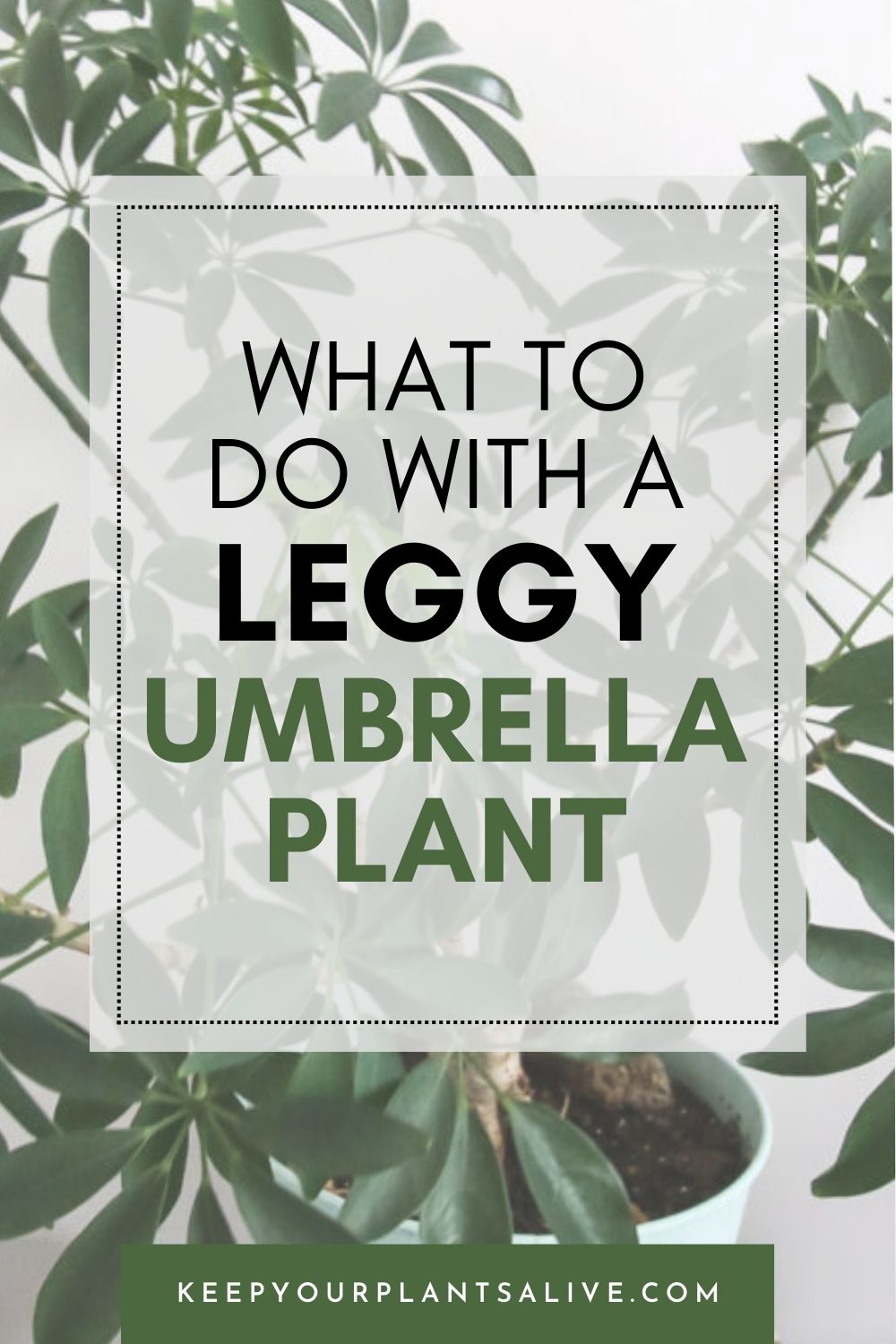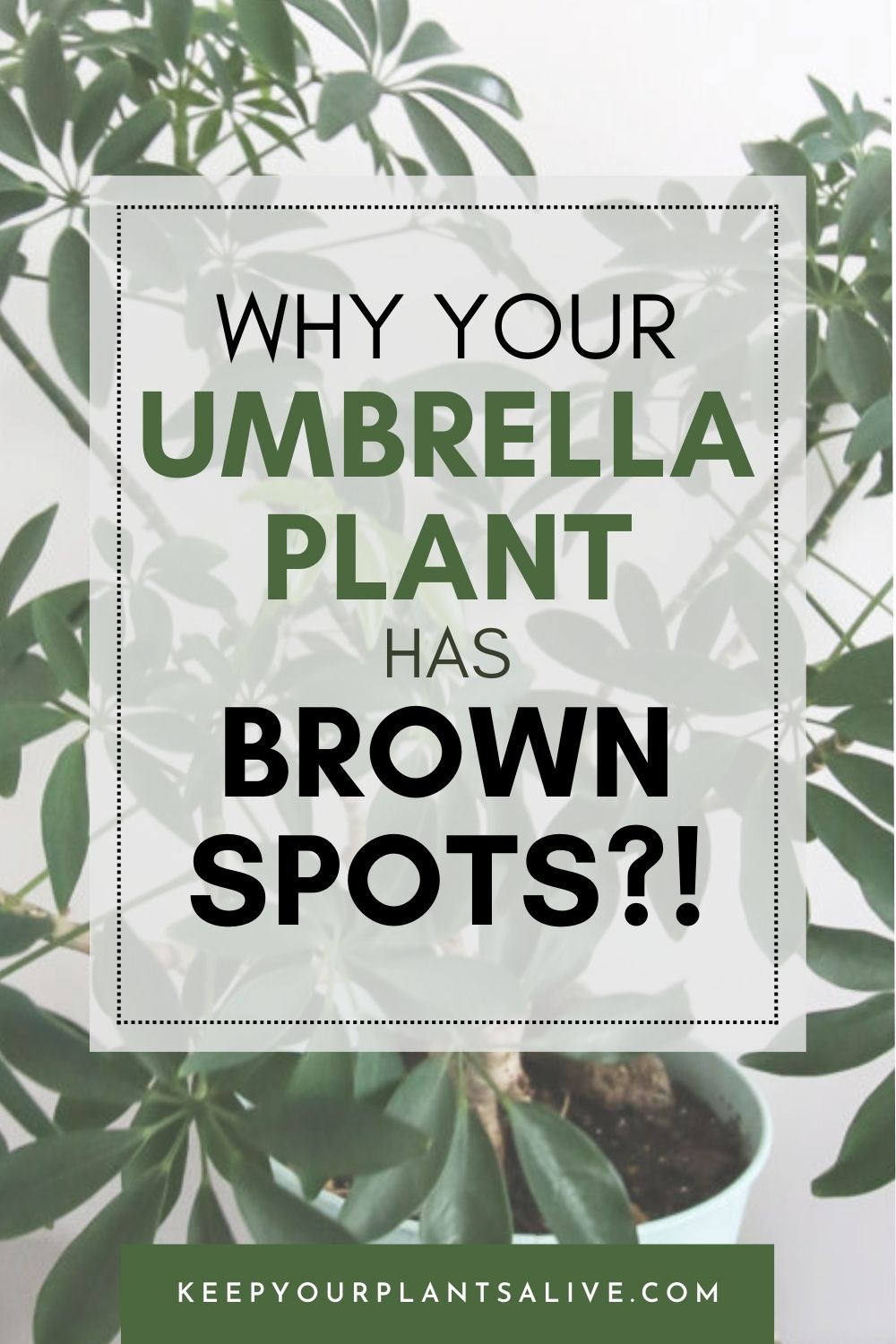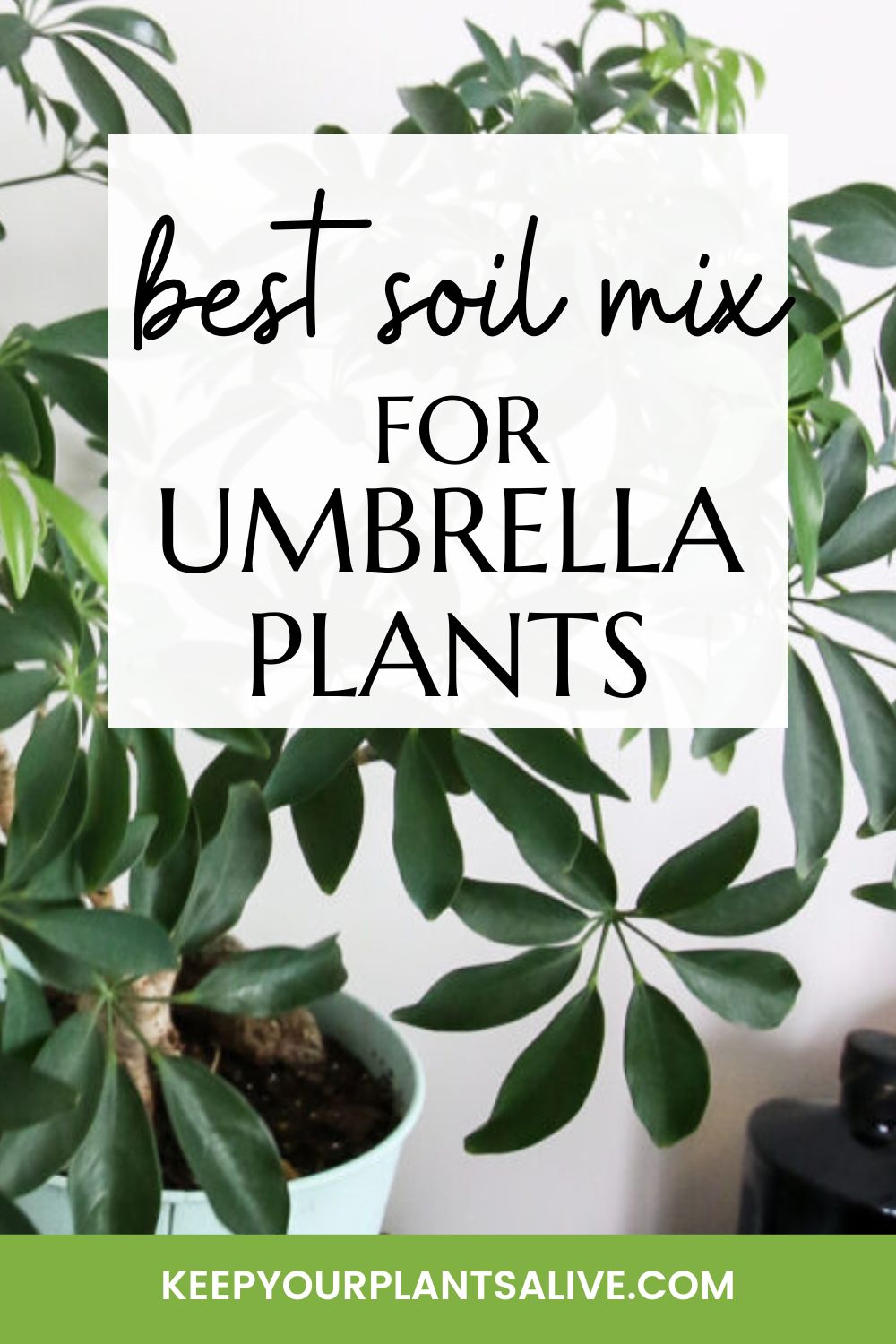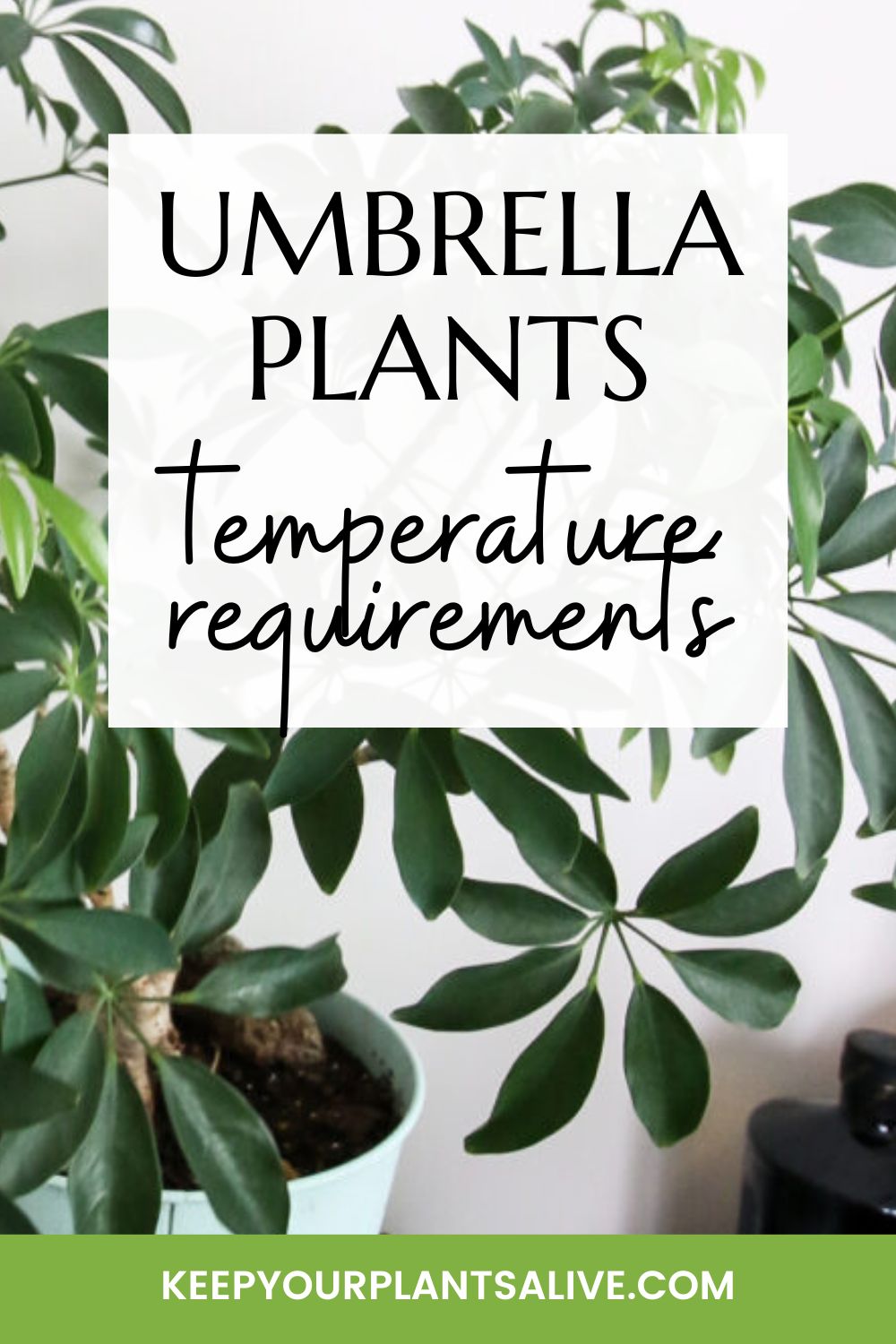Wondering what's the difference between an umbrella plant vs umbrella tree? Let's dive into what makes each of these plants unique!
Umbrella plants are a super popular house plant because they are relatively easy to grow and have such a fun, unique shape to them.
However, sometimes umbrella plants are called umbrella trees. This is more of a nickname because umbrella plants and umbrella trees are actually two different plants.
Umbrella plant usually refers to the dwarf umbrella tree, which is known as a Schefflera Arboricola. On the other hand, umbrella trees are large outdoor trees known as the Schefflera Actinophylla.
Let's dive into all of the differences between these two similar - but different - plants!

Umbrella Plant: Schefflera Arboricola
The umbrella plant, scientifically known as Schefflera Arboricola, is a popular choice among indoor plant collectors due to its interesting appearance and easy maintenance.
One of the most distinctive features of the umbrella plant is its lush, glossy foliage. The leaves are palmate, meaning they radiate from a central point, giving the plant an umbrella-like appearance.
These leaves are typically deep green in color, though there are different varieties with different coloration and even variegation.
Umbrella plants grow like miniature trees, with compact and bushy growth on the end of the branches. They are the perfect size for tabletops, desks, and home offices.
Ideal Growing Conditions
- Light: These plants thrive in bright, indirect light. While they can tolerate lower light conditions, they flourish when placed near a window with filtered sunlight.
- Watering: Moderation is key when it comes to watering umbrella plants. They prefer slightly moist soil but can withstand short periods of drought. Overwatering can lead to root rot, so it's crucial to allow the top inch of soil to dry out between waterings.
- Temperature: They prefer average room temperatures between 60°F to 75°F (15°C to 24°C). Protect them from drafts and sudden temperature changes.
- Height: The umbrella plant typically ranges from 8 to 12 inches (20 to 30 cm) when kept as small indoor plants. However, they can grow taller if allowed to develop in ideal conditions.
Popular Varieties
- Dwarf Umbrella Plant: This variety stays particularly compact, making it ideal for small spaces and decorative plant arrangements.
- Variegated Umbrella Plant: Variegated varieties feature leaves with beautiful white or cream-colored streaks, adding an elegant touch to the plant's overall appearance.
- Gold Capella: This variety has stunning green and yellow leaves, creating a striking contrast and making it a popular choice among plant enthusiasts.

Umbrella Tree: Schefflera Actinophylla
The umbrella tree, scientifically known as Schefflera Actinophylla, is a striking and iconic indoor plant with a distinctive appearance.
The most noticeable feature of the umbrella tree is its considerable size. Unlike its smaller counterpart, the umbrella plant, the umbrella tree grows tall and wide.
Its leaves are arranged in a circular, umbrella-like pattern at the ends of long, sturdy stems. This arrangement gives the plant its characteristic silhouette, resembling a lush, tropical umbrella canopy.
Umbrella trees are known for their height, which can range from 4 to 8 feet (1.2 to 2.4 meters) indoors, and even taller in their natural habitat. Their vertical growth adds an element of grandeur to indoor gardens, making them a focal point even in larger rooms.
The leaves of the umbrella tree are relatively large, often measuring around 12 to 20 inches (30 to 50 cm) in length. These broad, glossy leaves contribute to the plant's lush and tropical appearance.
The umbrella tree grows super quickly, producing new leaves regularly in ideal conditions. It forms a thick, woody trunk over time, enhancing its tree-like appearance.
The plant can be pruned to control its size and shape, allowing for customization based on available space and aesthetic preferences.
Ideal Growing Conditions
- Light: Umbrella trees thrive in bright, indirect light. While they can tolerate some shade, providing them with bright, filtered sunlight enhances their growth and leaf color.
- Watering: They prefer consistently moist soil. Water the plant thoroughly and allow excess water to drain away. However, it's crucial to avoid waterlogging, which can lead to root issues. Let the top inch of soil dry out before the next watering session.
- Temperature: They enjoy warm and humid environments. Maintaining room temperatures between 60°F to 75°F (15°C to 24°C) and occasional misting helps recreate their natural tropical habitat.
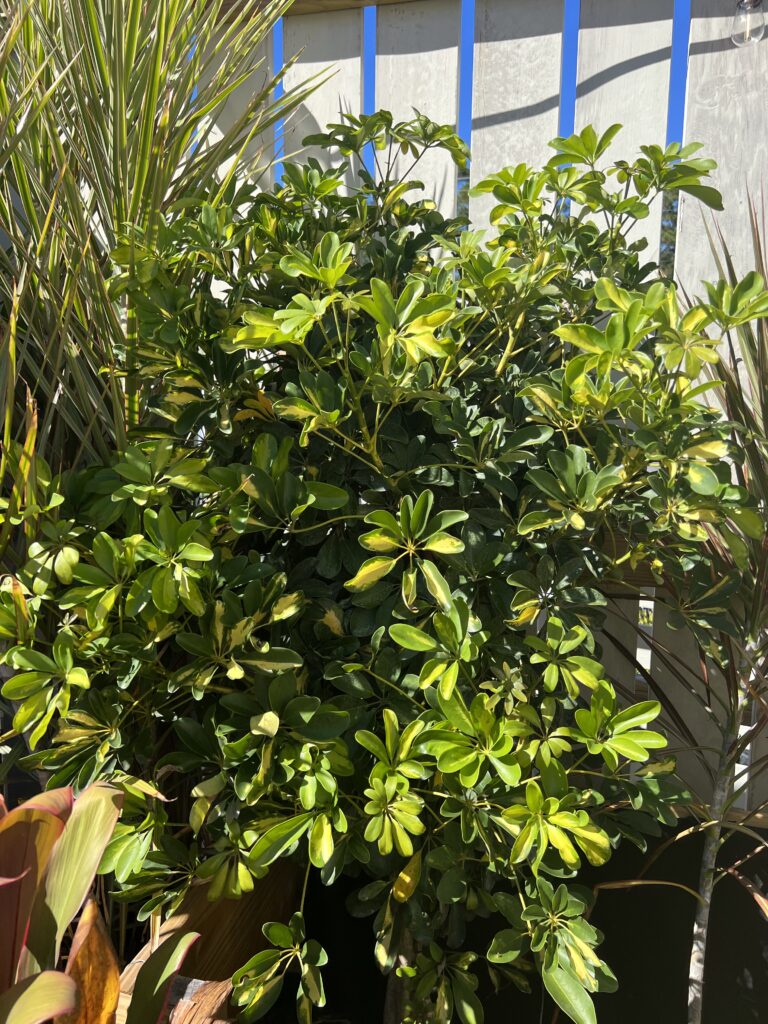
Umbrella Plant vs. Umbrella Tree: Major Differences
Here are the major differences between and umbrella plant and an umbrella tree!
| Difference | Umbrella Plant (Schefflera Arboricola) | Umbrella Tree (Schefflera Actinophylla) |
|---|---|---|
| Leaf Arrangement and Shape | Palmate leaves radiating from a central point, resembling small umbrellas. | Larger compound leaves arranged in a circular pattern at the ends of long stems. |
| Size and Growth Habits | Compact, suitable for tabletops and smaller spaces. | Taller, often reaching the ceiling, requiring more vertical and horizontal space. |
| Varieties and Cultivars | Dwarf umbrella plant, variegated forms, and more. | Specific varieties with differences in leaf color, size, and variegation. |
| Care Requirements | Low-maintenance, thriving in bright, indirect light, and moderate watering. | Needs more space, bright, indirect light, and regular pruning to maintain shape. |
Leaf Arrangement and Shape
Umbrella plants and umbrella trees, despite their similar names, have different leaf arrangements that set them apart from each other.
Umbrella plants (Schefflera Arboricola) are characterized by their elegant palmate leaves, which fan out like miniature umbrellas from a central point. These glossy leaves are lush and compact, making them ideal for tabletops and smaller spaces.
In contrast, umbrella trees (Schefflera Actinophylla) have larger, compound leaves arranged in a circular shape at the ends of long, sturdy stems. This unique arrangement gives the umbrella tree its iconic silhouette, resembling a tropical canopy of umbrellas.
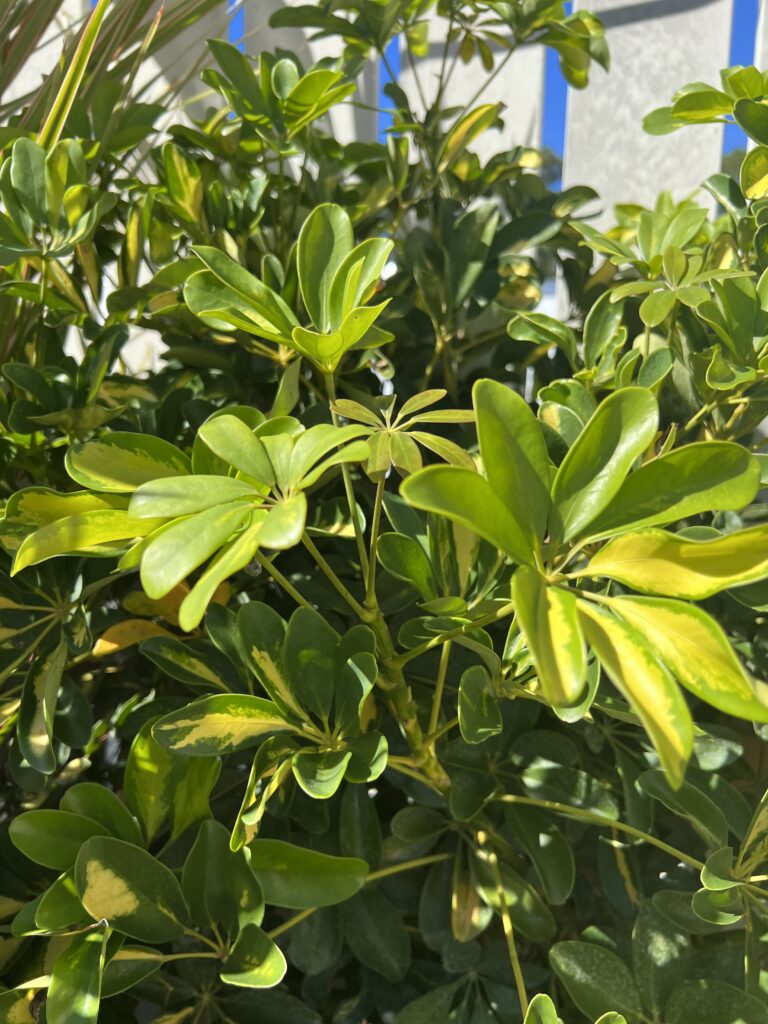
Size and Growth Habits
One of the biggest difference between these two plants is the size. Umbrella plants are compact and are perfect for tabletops, desks, or plant stands.
On the other hand, Umbrella trees are - you guessed it - trees. They grow taller and will need more space due to their height and width.
I think that size is the top factor to consider when choosing between these plants - do you want to add a tree or tabletop plant for your home?
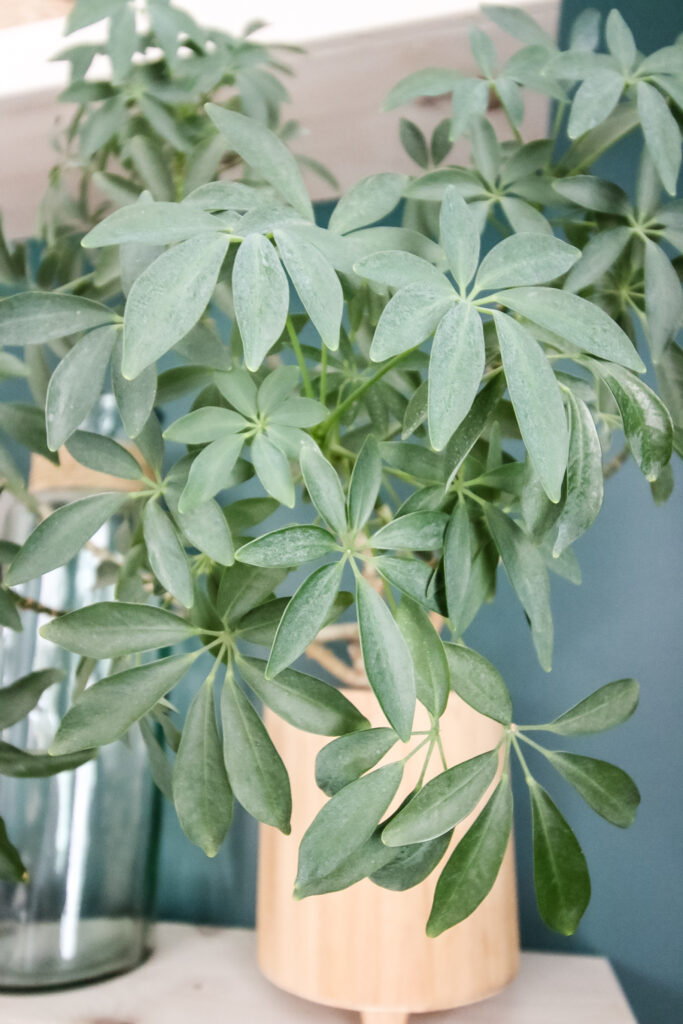
Care Requirements
Umbrella plants are relatively low-maintenance, thriving in bright, indirect light and requiring moderate watering.
Umbrella trees need more space, bright, indirect light, and regular pruning to maintain their shape.
Both are relatively easy to care for, though an umbrella tree will need slightly more attention and light to thrive!
Umbrella trees and umbrella plants are both fantastic plants to keep in your home or on your patio. Assess your space, light conditions, and care preferences to decide which is best for you!
Want more umbrella plant content?
- Umbrella plant care guide
- How to propagate an umbrella plant
- Why is my umbrella plant dying?!
- Are umbrella plants toxic?
- When to repot an umbrella plant
- Can an umbrella plant live outdoors?
- Why is my umbrella plant dropping leaves?
- Why is my umbrella tree turning black?
- Why is my umbrella plant getting yellow leaves?
- Why are my umbrella plant leaves turning brown?
- Why does my umbrella plant have sticky leaves?
- Why is my umbrella plant wilting?!
- How to train your umbrella plant to grow in a specific direction
Printable Umbrella Plant care guide
Join the (free!) KeepYourPlantsAlive+ community to access this exclusive printable plant care guide! Once you sign up, you can right click & save the JPG care guide. Or keep scrolling for more!
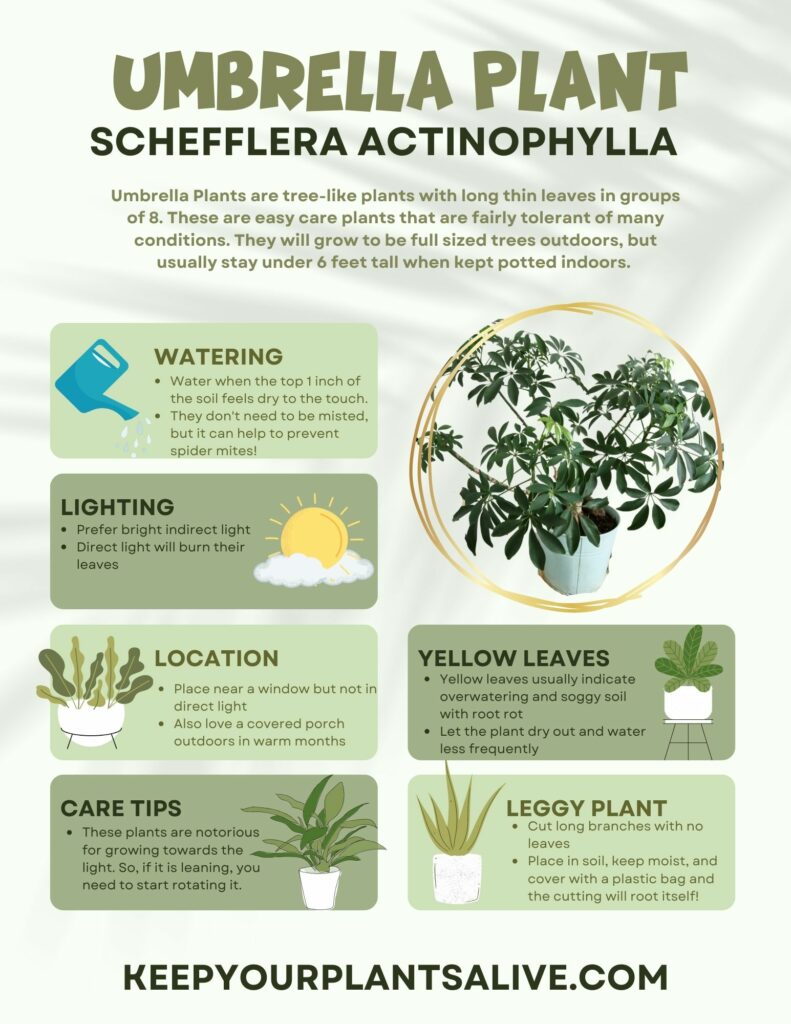
Thanks for reading!


Hey there, I'm Morgan, a houseplant enthusiast from sunny Charleston, South Carolina. Growing up surrounded by my mom's lush orchids and African violets, I discovered the magic of bringing nature indoors. Thanks to the pandemic, I delved deeper into houseplants, discovering their power to uplift moods and transform spaces. I'm here to spill all my secrets, helping you pick the perfect houseplant - and make it happy. Let's keep your plants alive, together! 😊

